After finishing our study abroad trip to Singapore, we flew to Phuket, Thailand, on Friday, January 11, where we had the weekend to relax before our new round of lectures began Monday morning in Bangkok.
Phuket is a bustling town on Patong Bay in the south of Thailand. I saw no visible signs of the tsunami that had devastated the town in December 2004. It seemed to be business as usual, although admittedly I didn’t know what it was like before the tsunami. Christmas lights and New Year’s decorations were still up throughout the town, reminding us of what we’d left behind in the U.S.
At Club Andaman Beach Resort, we were greeted by a charming Thai woman in a green dress, serving lime green drinks of guava juice. The club was lovely, with an open air lobby and teak walls. Another Thai woman sat cross-legged on a platform playing a tranquil melody on a musical instrument of some kind. The grounds of the Club were impossibly green and manicured.
On the streets of Phuket, motorbikes were everywhere: a very cheap mode of transportation for the poorer population. A number of us walked down the main street from the Club and picked out a sidewalk restaurant that had photos of food posted on a billboard. I ordered tiger prawns and asparagus; I was able to pick out the number and sizes of the fresh prawns for them to cook. I ordered a Tiger beer, much less expensive than the 15 Singapore dollars I paid at the Meze Bar in that city.
We found a six-person taxi cab, open air with two bench seats facing each other, like a motorized stagecoach. We took it to the open air markets, where there were Buddha faces and figures, teak elephants and vases, purses made of Thai silk with gold threads in elephant patterns. Sarongs, cheap bags, shoes, and camouflage shorts were all the rage. At each shop, a girl or young man called out softly, “Madam. Madam! You want look?”
On Saturday morning, January 12, we had a buffet breakfast outdoors under a pavilion at Club Andaman. A Thai woman played soothing music, adding ambiance to our lush surroundings. We attended a lecture in the morning and then we were free to do whatever we wanted for the day.
I opted to spend my day at Patong Beach, the most famous beach resort in Phuket. There was a busy and tacky business street, with crowds of people wandering about, dividing the beach from the resort. Massage parlors abounded. I paid 100 baht for a beach chair. A young man swept the sand from the chair with a straw broom and he dropped by periodically to repeat the sweep. He offered to open my umbrella for me. Men and women strolled up and down the beach offering sarongs, teak elephants and other souvenirs for sale. You could order fruit drinks from young men that came around or from a shack bar up on the beach.
Many of the women were topless; I knew this was quite European and acceptable in all parts of the world, but I had never experienced topless beaches before. I was surprised at some of the fat or older women who were topless and should not have been! No one seemed to look twice at these women. There were plenty of big-bellied men wearing Speedos – mostly Australians. All kinds of activities were going on in the water: parasailing, jet-skiing, and boating. It was much like beaches I’d visited in the Caribbean and elsewhere.
After I lounged around for a long time at the beach, I sought out a massage parlor in town, as I’d heard they were incredibly cheap. Every other shop was a Thai massage parlor, with petite uniformed Thai girls sitting out front beckoning customers. I stopped at one that looked clean and comfortable, and the girl led me to a room full of mattresses on a wood floor. She pulled a curtain around the mattress and told me to get completely naked. Then she squatted and slathered me with oil. I was amazed at how limber she was, maneuvering into all kinds of positions to give me the massage. It was a little risqué by American standards: the being totally naked, the way the masseuse squatted and clambered about rather than standing, the proximity she came to touching my private parts. It was a full hour, full-body massage and cost only 300 baht, a mere $9 U.S.! I loved it, though I felt a little uncomfortable with some of the familiarity. American massages were much more prudish, possibly because of fears of lawsuits for inappropriate touching.
I was feeling depressed on this study abroad program; our group didn’t have the cohesion that our group on the Mexico Study abroad program had. This was one of the first times I realized I didn’t take well to group vacations.
In the evening, a few of us ate at the Cairo Restaurant. I was drawn there because I was missing Egypt so much and feeling like nothing would ever compare. I felt lost.

massage parlor in Phuket
On Sunday, January 13, we took a boat trip through Phang Nga Bay, where we visited a number of islands, canoeing through soaring limestone cliffs jutting from emerald water and dark hongs, and climbing trails to villages selling local crafts. Phang Nga Bay covered an area of 400 sq km and was home to some 100 islands, many of which had notable beauty or freakish shapes.
After I took the pictures below, my camera battery ran out, and I was without a camera for the rest of this beautiful trip. How irritating and disappointing, and what ridiculously poor planning. Luckily, Jennifer Fox, one of my colleagues on the trip, let me have a number of her amazing pictures from our day.
James Bond Island, or Koh Tapoo (meaning Nail Island in Thai), had a starring role in the 1974 James Bond movie ‘The Man with the Golden Gun’.
We were able to go sea-kayaking through the Hong, or ‘rooms,’ that lay inside some of Phang Nga’s islands. These were collapsed cave systems open to the sky and surrounded by towering limestone walls. We paddled sturdy plastic boats through caves into the mysterious hearts of islands such as Koh Panak and Koh Hong.

boat ride on Phang Nga Bay

Phang Nga Bay
On Monday morning, January 14, we flew from Phuket to Bangkok, where we spent most of our time sitting in traffic trying to get to our hotel.
Bangkok was a modern city with horrible pollution – the air was actually a gray color. Many of us got flu-like symptoms upon our arrival, and it became clear why people were walking around wearing surgical masks. Traffic congestion was a huge problem. Every time we traveled by bus in the city, it took us at least an hour to get to our destination. Taxi cabs, mostly Toyotas and Mitsubishis in bright colors of royal blue, red, yellow, hot pink, and purple, abounded, but it was faster and more convenient to travel by the sky train.
Finally we made it to our hotel, where we were given free time to settle in and relax. Later in the evening we went to a touristy venue to eat a traditional Thai meal and watch traditional dancers. We took turns riding elephants around the square, not remotely authentic, as I pictured elephants strolling through lush jungles. I have always disliked this kind of venue set up expressly for tourists.
On Tuesday morning, we had lectures at the United Nations in Bangkok. Thailand is a strong supporter of the United Nations and has contributed to UN peacekeeping operations. It has also ratified a range of UN human rights, labor and environment conventions and treaties. Many of the UN’s regional organizations are based in Bangkok.
In the afternoon, after our lectures, I took the sky train from Phrom Phong, near our hotel, to Surasak; I was in search of a Hindu temple. The sky train was 40 baht each way ($1.34) and quite high-tech. From the outside, it looked like a solid train covered in advertisements with no windows, but on closer view there were dots painted in patterns on the windows so that insiders could see out, but outsiders couldn’t see in. Inside, seats lined the walls, facing each other, and in the middle were red rubber loops where people in the center hung on. I couldn’t figure out how to tell at which station we were until I noticed TV screens mounted on the ceilings. In between high-tech advertisements and music videos, the upcoming station was announced and written in Thai and in English. It was impressively modern, unlike our Washington, D.C. transit system.
I was disoriented when I got off the sky train, so I headed down some side streets trying to orient myself. Suddenly I was surrounded by throngs of schoolchildren in uniforms of black pants and white shirts. I had walked into the middle of the Bangkok Christian College as the kids were released from school. They were roaming all over the streets eating snacks from street vendors, causing quite a commotion.
I found the Hindu temple, Sri Maha Mariamman Temple, on the corner of thanon Silom and thanon Pan. Outside the temple were street vendors selling colorful flowers and fruits for offering to the Hindu gods. Apparently the temple was devoted to the goddess Uma Devi. It burst with colorful plaster statues of deities.
I walked in, took off my shoes, and began walking slowly around the perimeter of the temple counterclockwise. An American woman in a sarong advised me quietly that I might want to consider walking in the other direction, clockwise. That was the normal way it was done, she told me knowingly. After turning and walking around in the proper direction, I went inside to see the Hindu statues surrounded by wilting offerings. A man in a diaper-like cloth approached and put a red and a white dot on my forehead. I enjoyed walking down thanon Silom with the two dots on my head, feeling very exotic.
Riding on the bus through the city, I observed a lot of interesting things. In a construction parking lot, a group of 5- or 6-year-old children played without any apparent supervision. Most street signs were in English and Thai. Photographs of a youthful gold-clad King were everywhere. Many people in the streets were wearing black and white as they were in mourning for the King’s sister, who recently died. Thai graffiti covered corrugated aluminum fences. I saw many familiar businesses: 7-Eleven, Orange Julius, The Love Boat Club, Goodyear, Green Ninth, Gloria Jean’s Coffee, Laser Center Clinic, McDonald’s McCafé, Syntec Construction, Coyote, Pasta ‘n Noodles, Starbucks, Pizza Hut, KFC, and Hard Rock Café.
The Thais who worked as street vendors seemed quite industrious. In front of the 7-Eleven down the street from our hotel was a thriving restaurant business crowded onto the corner. A number of vendors were cooking up meals and seating people on plastic chairs. One could eat a full meal, accompanied by a soda from the 7-Eleven, and then grab an ice cream from the store to eat with fruit from a vendor.
Further down Sukhumvit Road, I encountered vendors selling shoes, making flower arrangements and garlands, making fruit shakes, and cooking all kinds of food. Compared to Mexican street vendors I observed in that country, the Thais were highly industrious. Most of the Mexicans just passively sat on blankets spread on the street; many were selling worthless trinkets. The Thai vendors seemed much more active and thriving.
The city was not pedestrian-friendly. The traffic was horrible and there were not many pedestrian crossings. I put my life on the line many times to get across the street.
In the evening, some of us went to the Dubliner where we drank a few beers and sang along with an Irish singer.
On the way back from the bar, I stopped to have my fortune told by a smelly woman on the street. She told me I would live to 95-100; that I would never again have love in my life, only friendship; that she saw me having a good job, but money in, money out; that I would have a lot of stomach problems; and that I would meet a married man in 2009 who was bad karma. Not such good news from the Thai fortune-teller!
Wednesday the 16th wasn’t very eventful as far as sightseeing because we were booked with lectures all day. All I can now remember from this day was one amazing foot massage.
Bangkok offered some of the best massages in the world for the cheapest imaginable prices. After our lectures, I went to this little place for a foot massage. Oh, heaven!

foot massage spot in Bangkok
On Thursday morning, January 17, we took a long-tailed speedboat down the Chao Phraya River and canals (khlongs) of Bangkok.
The river cruise would have been more picturesque if it hadn’t been such a dreary day. Our boat headed off the Chao Phraya River and down the Khlong Phasi Charoen, a 30 km long canal in the western part of central Thailand. We drifted past stilted wooden homes, mobile shops, ‘floating kitchens,’ colonial mansions and colorful culture along the riverfront.
Eventually, we stopped at Wat Arun, also known as the Temple of Dawn. There are over 31,200 Buddhist temples spread around Thailand. In Thai these are called wat. One of these, Wat Arun, is named after Aruna, the Indian God of Dawn. Standing tall on the Thonburi side of the Chao Phraya River, Wat Arun has an 82-meter high prang (Khmer-style tower), decorated with tiny pieces of colored glass and intricately patterned Chinese porcelain.
This Wat or Buddhist temple is an architectural representation of Mount Meru, the center of the world in Buddhist cosmology. In the mythology of Tibetan Buddhism, Mount Meru is a place that simultaneously represents the center of the universe and the single-mindedness sought by Buddhist practitioners.
After our boat ride, we wandered through a market and headed to the Grand Palace, a complex of buildings in the heart of Bangkok. The palace has been the official residence of the Kings of Siam (and later Thailand) since 1782. The king, his court and his royal government were based on the grounds of the palace until 1925. The monarch in 2008, King Bhumibol Adulyadej (Rama IX), at that time lived at Chitralada Palace, but royal ceremonies and state functions were held within the walls of the palace every year.
Construction of the palace began on 6 May 1782. Throughout successive reigns, many new buildings and structures were added, especially during the reign of King Chulalongkorn (Rama V). After the absolute monarchy was abolished in 1932, all government agencies completely moved out of the palace.
Rather than being a single structure, the Grand Palace is made up of numerous buildings, halls, pavilions set around open lawns, gardens and courtyards. Its asymmetry and eclectic styles are due to its organic development, with additions and rebuilding being made by successive reigning kings over 200 years of history.
We had lunch at a Thai restaurant, then we headed to the Buddhist temple Wat Pho, commonly known as the Temple of the Reclining Buddha. It was named after a monastery in India where Buddha was believed to have lived and was known as the birthplace of traditional Thai massage.
We left the complex and headed back into the streets of Bangkok, where we encountered fruit vendors and the chaotic tangle of Bangkok traffic.
After dinner, my classmate Johanna, who had not been feeling well since we arrived in Bangkok, and I went for a relaxing foot massage.
On Friday, January 18, we attended lectures by the Faculty of Political Science at Chulalongkorn University in Bangkok.
According to the university’s website, Chulalongkorn University, Thailand’s first institution of higher learning, officially came into being in March, 1917. It grew out of the royal policy of King Chulalongkorn (Rama V) to strengthen and improve government so that the country could successfully resist the tide of colonialism.
In the evening, after our day of lectures, we went on the Grand Chaophraya Cruise, where we had our final group dinner. We enjoyed a great buffet, traditional music and dancing as we concluded our study abroad trip in Singapore and Thailand.
On Saturday morning, the 19th, most of our Study Abroad group took flights back to the USA. My ticket was booked for Monday morning, so I had two more days to explore Bangkok on my own. I’d never traveled alone before, so this was a bit scary for me.
The first place I visited was the Jim Thompson House, home of the self-made American entrepreneur who was the founder of the world-renowned Jim Thompson Thai Silk Company. Thompson’s achievements during his 25-year stay in the Kingdom of Thailand won him fame as the “Legendary American of Thailand.”
In 1967, Jim Thompson went on holiday with friends to the Cameron Highlands in Malaysia. There he set out for a walk in the surrounding jungle but never returned. Thus began the Jim Thompson legend.
I loved the complex of 1959 Thai-style teak houses and lush gardens in a peaceful setting. The complex included six traditional Thai-style houses, teak structures that were purchased from several owners and brought to the present location from all over Thailand.
After walking through all the houses and gardens, I decided to have lunch on the grounds, and then headed to a Buddhist temple I’d heard about. I checked out the active worship going on there as well as the elephant statues playing sentinel out front.
After wandering around this temple, I took a tuk-tuk to the Banyan Tree Bangkok, where I enjoyed a drink with hordes of people at the Vertigo and Moon Bar, a rooftop open-air grill and bar, along with amazing views of Bangkok.
On Sunday, January 20, my last morning in Thailand, I took the sky train to Mo Chit station and headed to the Chatuchak Weekend Market to do some shopping. The 35-acre area of Chatuchak was home to more than 8,000 market stalls. On a typical weekend, more than 200,000 visitors came here to sift through the goods on offer.
Being one of the hordes of tourists, I felt overwhelmed. This was a HUGE market with labyrinthine pathways leading in every imaginable direction. There were so many things I wanted to buy, but of course it wasn’t humanly possible to buy, and carry back, all the things I wanted. Everything imaginable was for sale here, from clothing to handicrafts to ceramics to furniture to art, books and antiques. I found lanterns and Buddha statues and gold jewelry. Textiles abounded. I spent quite a bit of money, coming away with big bags filled with all manner of goodies. Sadly, I was too busy shopping to take many pictures.
I returned to my hotel to drop off all my goods. While there, I showered and relaxed a bit before heading out for a martini and a light meal at the famous Bamboo Bar at the Mandarin Oriental Bangkok. The owners described it as an African safari lodge. The furniture was decked out in animal prints or leather on dark wood floors, with bamboo and palm fronds abounding. I sat at an outdoor table.
On Monday morning, January 21, I flew out of Bangkok, heading by way of Tokyo back to Washington. It was a long, long flight. Once home, I would continue the last semester of studies for my Master’s degree in International Commerce & Policy at George Mason University.

Flying out of Bangkok
I was happy to say “ลาก่อน” (lā k̀xn = “goodbye” in Thai) to Thailand as it somehow seemed a disappointment to me – the traffic, the modernity. I guess I had envisioned a more laid-back culture. I probably would have found more of what I was looking for in Chang Mai or other places outside of Bangkok, but that would have to wait for some future day that might never materialize.
*January 11-21, 2008*
*************************
“ON RETURNING HOME” INVITATION: I invite you to write a post on your own blog about returning home from one particular destination or, alternately, from a long journey encompassing many stops. How do you linger over your wanderings and create something from them? How have you changed? Did the place live up to its hype, or was it disappointing? Feel free to address any aspect of your journey and how it influences you upon your return. If you don’t have a blog, I invite you to write in the comments.
For some ideas on this, you can check out the original post about this subject: on returning home.
Include the link in the comments below by Sunday, May 3, at 1:00 p.m. EST. When I write my post in response to this challenge on Monday, May 4, I’ll include your links in that post.
This will be an ongoing invitation on the first Monday of each month. Feel free to jump in at any time.
the ~ wander.essence ~ community
I invite you all to settle in and read posts from our wandering community. I promise, you’ll be inspired!
- Sheetal, of sheetalbravon, wrote about her nine-hour visit to the Vatican Museums in Rome.
- Sheetal, of sheetalbravon, also posted about her trip to Venice, Murano and Burano.
Thanks to all of you who wrote posts about “on returning home.”




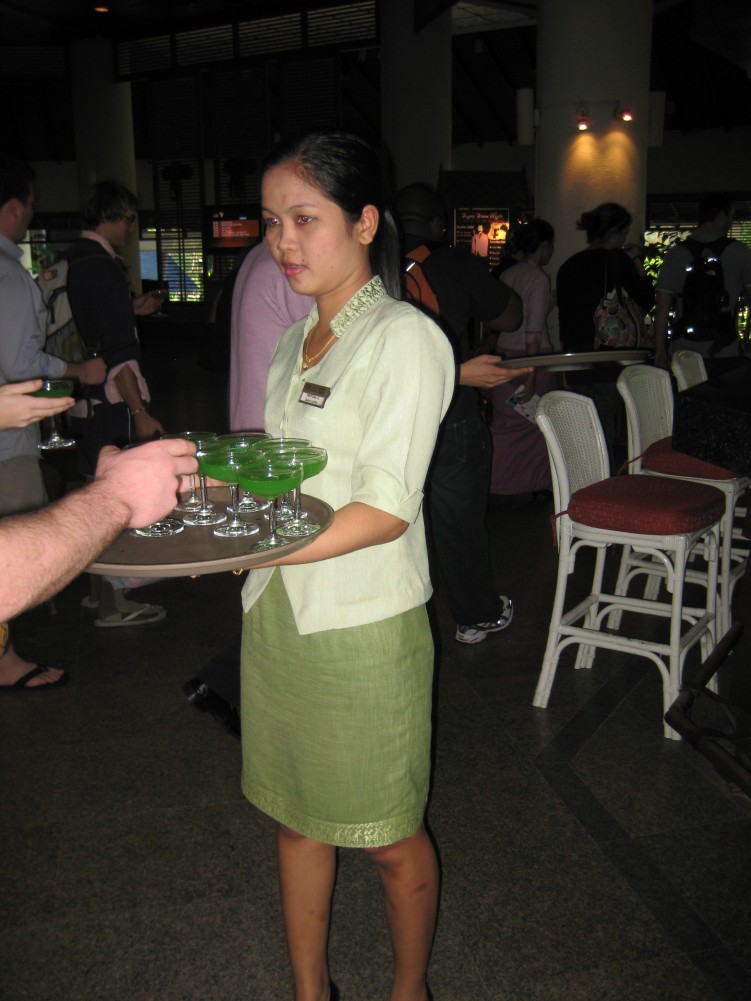





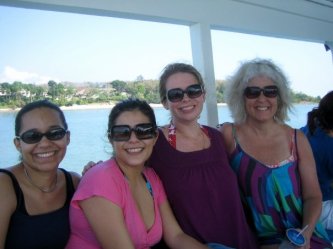











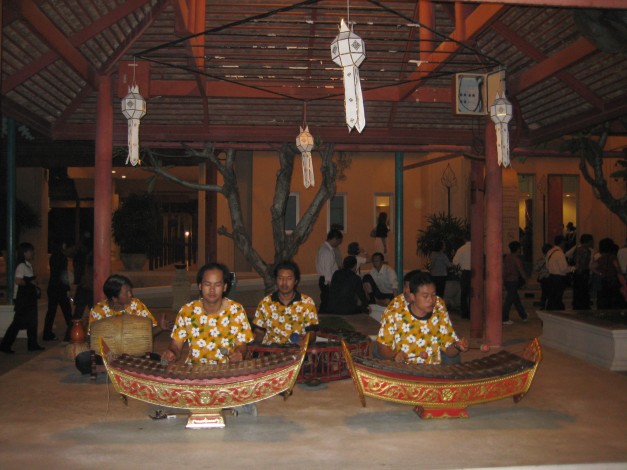




















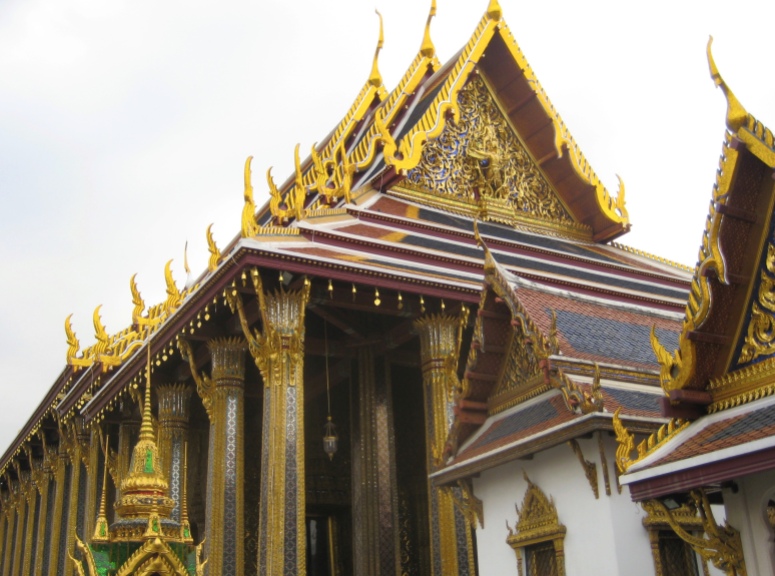



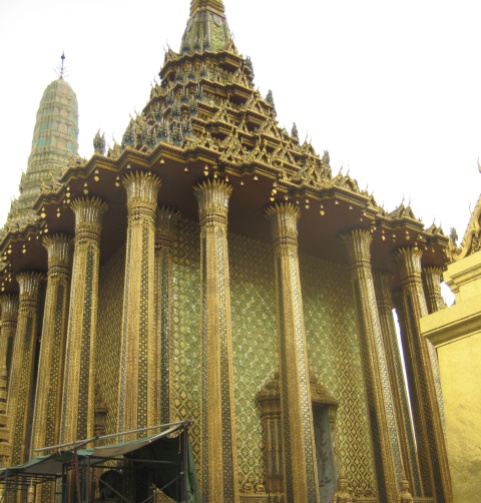



























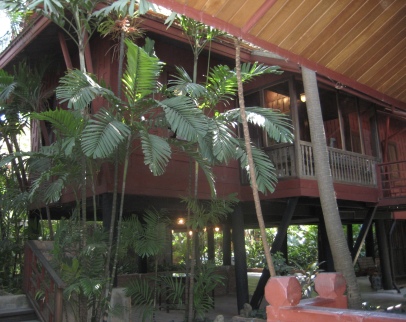








I think I would prefer a foot massage to the other one you describe. The last time I was in Bangkok was 1985. I think it’s changed a lot since then.
LikeLike
So you were there when it was probably less crowded, less modern, and more charming! I didn’t enjoy that experience sadly. This was in 2008, so I imagine it’s even worse now, 12 years later.
LikeLike
Charming isn’t the word I would use, with raw sewage running in channels under the footpaths. It was interesting. And I suspect the crowds weren’t any less than.
LikeLike
Yikes, that doesn’t sound charming at all! Maybe it’s always been crowded!
LikeLike
I expect so.
LikeLiked by 1 person
What an adventure!
LikeLike
Yes, it was, but not one of my favorites! Thanks, Theresa. 🙂
LikeLiked by 1 person
Gosh, that took me back. I was lucky to visit Bangkok for the first time in the 1970s when it was an S.E. Asian backwater, full of culture and charm but not at all modernised. I remember my eyelids being eaten alive by mosquitoes which were a hazard then as they didn’t spray the banks or the rivers which ran through most of Bangkok (they have since been built over). The road from the airport was through delightful countryside with pagodas, temples, buffaloes, people in ethnic costume etc. I felt as thought I’d fallen into a movie set and I fell in love with Thailand on that trip and continued to visit most years and watched Bangkok, Chiang Mai, Phuket and all the other places grow and modernise which has brought prosperity to the people and for which I’m glad. But, I have to admit it has lost some of its charm, but that’s the way of the world, isn’t it. Thank you for taking me back to a time when life was golden and I was supremely happy.
LikeLike
I bet Bangkok was so charming at that time, Mari. My husband had only fond memories of it when he lived there in the 1960s. The mosquitoes would not have been pleasant at all! Bringing prosperity is certainly a good thing for the people, but it’s too bad there’s a tipping point after which a place is ruined, much like Venice and other tourist hot spots. Aw, I’m glad I took you back to “supreme happiness.” That makes me happy. 🙂
LikeLike
I can’t remember exactly when we went to Bangkok, maybe 5 or 6 years before this. We saw some amazing temples, but my overall memory is of pollution and crowds. The sky train stopped outside our hotel and took us to the river. We then used river taxis. I do remember the Jim Thompson house as an oasis of calm.
LikeLike
Your memories don’t seem much different than mine, Anabel. It is not a place I care to return to. 🙂
LikeLiked by 1 person
At last somewhere I have been to! I spent three days in Bangkok on a stopover when I visited my son in Australia in 2003 and went to the Grand Palace and saw the Reclining Buddha – impossible to photograph! The thing I remember most was the humidity! I never got to the beaches though, but my daughter and her family spent last Christmas in Thailand and had a fabulous time.
LikeLike
That Reclining Buddha was nearly impossible to photograph! I’m glad you finally found a place you could relate to. My photography skills were nonexistent when I went in 2008; I think they have certainly improved since then. And yes, it was very humid. That’s why my hair is so frizzy in every picture. It was miserable all around, in my eyes. I’m glad your daughter at least enjoyed it. 🙂
LikeLike
She used to live in Durban. Humidity doesn’t bother her.
LikeLiked by 1 person
I’m learning to like smaller places that might have charm or at least a lack of crowds and pollution. I wonder if one can travel only to small towns and sites and such. I’d think this kind of travel might be good for garnering stories. Not to say you’ve ruined me for cities–I think your experiences and impressions simply merge with my biases already set.
Thank you, Cathy, for all I learned this trip!
LikeLike
I am now fully out of the mode for big cities, Christopher, although I imagine I will go to more as we are able to travel again. My favorite spots are either national parks, or small villages or towns. I find them most charming and enjoyable. Being out in nature is always one of my favorite activities. I think you could easily keep your travels to small villages, unless you’re flying in to a place. Then you can rent a car and get out of the city! We have a trip planned to Chicago in May that I imagine we’ll have to cancel. It was my husband’s idea, and I wasn’t hugely thrilled, but I’m sure it would have been fun anyway. We love to try out all kinds of restaurants and cafes, so I imagine we would have walked a lot and eaten a lot. But it seems it’s not to be. Thanks so much for coming along, once again, Christopher. I really appreciate your reading and commenting. 🙂
LikeLike